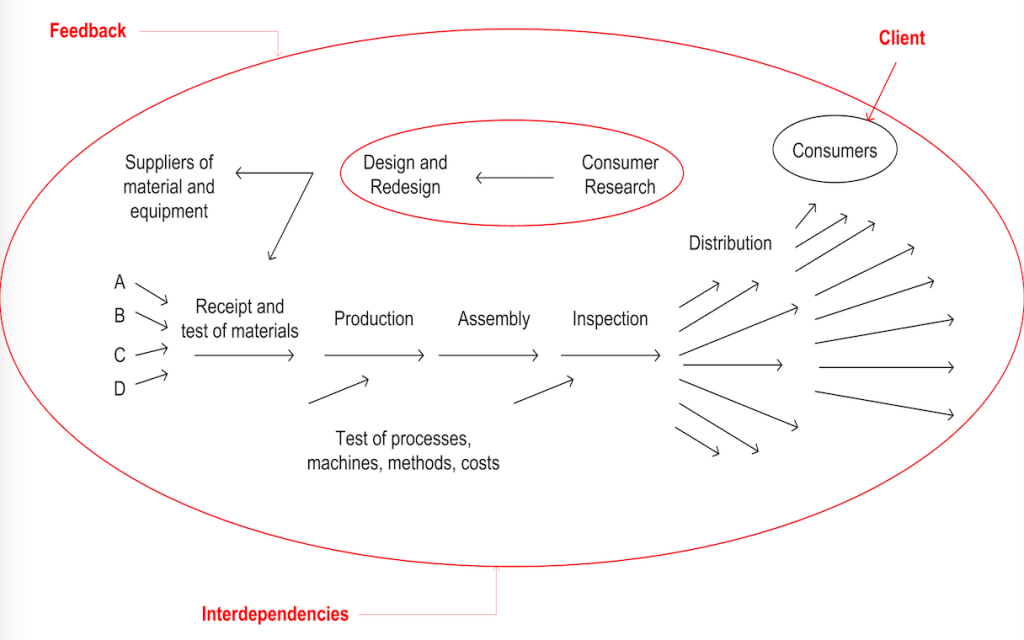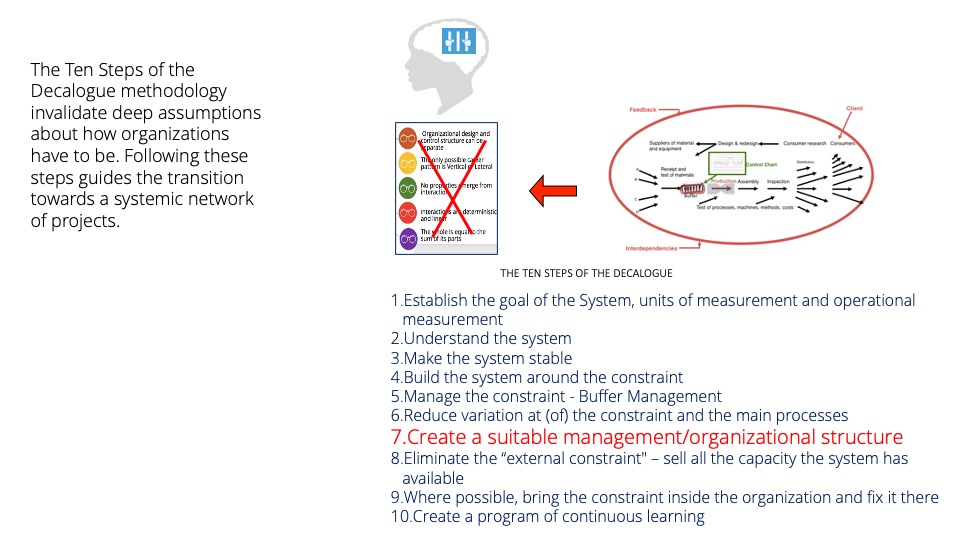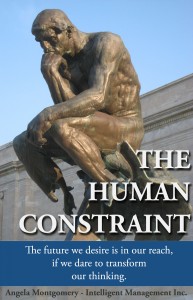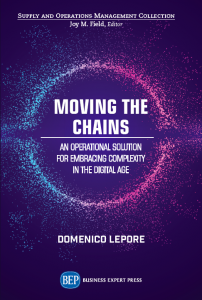
The pandemic crisis is revealing unsustainable economic and business models and practices in a brutal and accelerated way. Nobody can predict today what the “new normal” is going to look like, in spite of the myriad of articles offering advice on how to adapt and be more resilient in a post-COVID-19 reality.
One such article is ‘Speed, Being Relevant in the Next Normal’ from Salesforce’s Chief Digital Evangelist, Vala Afshar. Afshar points to Zara’s ability to create fast fashion as an example of the way companies need to be fast because “speed is the new currency of business, but you cannot be fast if you are not designed for movement.”.
“Speed itself is not possible without processes and organizational structured that are specifically and intentionally designed to enable flow, or continuous movement, of information and other valuable resources like product and money. The challenge is that most companies are simply not designed or governed that way. Instead they are organized to facilitate the management and control of those same resources through features like stage-gate processes, decision/approval hierarchies and departmental silos, all of which are ubiquitous across organizations and industries. Even the directive from leadership for growth seems to prioritize size over speed. This is why any company, in any line of business or sector industry, that is designed for movement, is worth studying for lessons, examples and analogies.”
The article goes on to offer several analogies concerning speed of flow, like pumps and filters and some “suggestions”. These include:
- Understand and rethink basic assumptions about how you do business and manage resources
- Remove barriers to effective and timely decision making
- Decentralize and delegate and create teams of teams to develop a culture of autonomy, connectedness and responsiveness
- Be prepared for more remote working
- Eliminate low-value tasks
- Rethink how to assert your organization’s culture and identity in the absence of a physically identifiable “center”
- Turn customer feedback into immediate product design change
- Every company must be digital
The author rightfully points out the danger of silos and makes some nice suggestions, but most people will be left wondering how they are to achieve such a radical shift.
Replacing suggestions with science, knowledge, understanding and method
Let’s take a look at Afshar’s recommendations. First of all, the notion of using a case history so you can model the success of another firm is moot. You do not have access to the thought process behind it. Also, Zara is the definition of unsustainable in the sense that fast fashion, while creating profits for Zara, is causing untold damage for the planet.
What is valid, instead, is to access underlying universal principles that can be applied to a variety of situations and sectors so leaders can shift their organizations towards flow and make decisions and take actions based on correct and timely input. The mention the author of the article makes of fluid and pumps and “flow-based principles” is evocative but demonstrates no true understanding of the science required to create a true paradigm shift towards flow and a suitable method and practices.
Without the science to back us up, we have words and suggestions. Our scientific understanding of nature has changed in recent decades but companies are lagging behind in this knowledge. Without an approach to management that is based on a thorough understanding of complexity, systems and networks, the risk is to apply “patches” to an outdated way of operating. Companies will then lack the strength, cognitively and practically, to carry out any effective transformation for speed of flow. “Lessons, examples and analogies” are not sufficient. The author is clearly trying to find a way out of the silos, but has not yet fully exited linear thinking if he talks about “pumps” and a Salesforce process that they use “from top to bottom of the company”. There is not top and no bottom. There are inputs, outputs, interdependencies, flow and feedback. To accelerate the flow, you need a strong grasp on fundamental systems science and complexity principles and a set of measurements that allow you to monitor and make decisions that are not just fast but accurate. Without knowledge and understanding of constraint management and variation, this is not possible.
In a previous article, Afshar states “if designing experiences for flow is still in its infancy, designing organizations for flow is not even being conceived of by most of us.”
This is why over the last 25 years, with a team of physicists, engineers and mathematicians, Intelligent Management has been helping companies shift focus towards accelerated and reliable flow by developing an organizational design, operational model, method and tools based on solid systems science. The elements of systems science that can carry management into the 21st century can be found in the work of W. Edwards Deming, the founding father of Quality, and in the Theory of Constraints developed by Dr. Eliyahu Goldratt, both physicists. Their work is fused together in our ten steps for transformation methodology, The Decalogue.
Let’s take a closer look at the “suggestions” in the article and a concrete, science-based and practical way of accelerating flow reliably in an organization.
“The customer has always driven the business model.”
Precisely. It’s called “demand driven” and this is Theory of Constraints 101. It makes no sense to be churning out products unless the market is able to absorb them. We no longer live in a supply side economy so unless you work with a “pull” model you will lose money. As Theory of Constraints is a systemic approach to management, it also teaches businesses that everything is interconnected, so production must be closely informed by, and in communication with, sales and marketing.
“Understand and rethink basic assumptions about how you do business and manage resources.”
This is exactly where we start with any client and we have a very structured way to help them achieve this. Surfacing assumptions does not come naturally because we tend to be blind to our own mental models. The Theory of Constraints provides a structured and effective way to surface assumptions governing our current reality as an organization in order to generate breakthrough solutions. It’s called the Core Conflict Cloud.
Step 1 of the Decalogue Ten Steps is ‘Establish the Goal of the System’. First, we have to understand that every company is a system, a network of interdependent components that work together to achieve the goal. Deming introduced this systemic understanding decades ago. When we use the Core Conflict to rethink assumptions, challenge our mental models also establish a realistic goal for our system.
“Remove barriers to effective and timely decision making.”
Deming continuously called for breaking down barriers. This can only be achieved by redesigning the organization as a system. The traditional functional/hierarchical shape inevitably creates barriers causing frustration, sub-optimization of resources and slows down the flow of communication, materials and money. To remove barriers and accelerate decision making you have to have something else to put in their place, a fully worked out alternative model, otherwise it’s just magical thinking or temporary fixes.
Step 2 of the Decalogue is ‘Understand the System’. This entails mapping out all the interdependencies as one, whole system and improving their design where necessary.
“Eliminate low-value tasks.”
This is a by-product of Step 2 of the Decalogue. Mapping the system will bring to the surface any unnecessary steps and redundancies within processes, and provides the basis for continuous improvement of the system. Continuous improvement is only possible, however, when we acquire understanding and knowledge of the variation that affects every human activity, and consequently, every process in an organization. Statistical Process Control is a body of knowledge that allows us to improve processes and receive the right information for decision making that makes sense, rather than “tampering with the system” as Deming called it. Step 3 of the Decalogue is ‘Make the System Stable (understand variation and its impact on the network)’.
“Turn customer feedback into immediate product design change.”
Once again, by mapping out the system and understanding that a company is a network of interdependent components, it becomes obvious that this must include the customer. Deming’s sketch clearly shows that the customer must be clearly in the picture when we think of the organization as a system and there must be a continuous feedback cycle that informs everything that happens.

“Decentralize and delegate and create teams of teams to develop a culture of autonomy, connectedness and responsiveness.”
You cannot simply remove things without having a viable and strong alternative. Decentralization and delegation are indeed desirable but they have to be part of a structured adoption of a systemic model. Step 7 of The Decalogue is ‘Create a suitable management/organizational structure’. When the Decalogue was published in 1999 it was still not completely clear what that organizational structure was in an operational sense. In the years that followed we were able to leverage network theory and the Critical chain algorithm to develop the ‘Network of Projects’ organization design. As far as teams are concerned, they are indeed of great importance but they cannot be successful as long as they have to be “cross-functional”. When we come to look at an organization as a pool of available competencies instead of a vertical functions, then we can truly create teams that are not hampered by functional boundaries. We wrote about this in our post ‘Team of Teams: A Systems View’.
“Be prepared for more remote working.”
For most companies the major concern here is, how do you “control” people’s work when they are at a distance? First, we have to have a clear map of what needs to be done when, by whom and why. Once we know this (see Step 2 of the Decalogue) then it becomes much easier to plan, synchronize and deliver necessary tasks. The Theory of Constraints provides excellent visual and cognitive supports that can be shared among staff for planning and Critical Chain Project Management (CCPM) can become the engine that accelerates the completion of the network of projects that make up the work of the organization.
“Rethink how to assert your organization’s culture and identity in the absence of a physically identifiable “center.”
The idea of a distributed organization is increasingly relevant because digitization is taking us in that direction at a speed that is cognitively hard to grasp for many people. To overcome the linear, vertical notion of what an organization is and how it has to work, the Network of Projects provides an operational solution. All the elements of this new approach to design and manage organizations as networks are described in our 2011 book ‘Sechel: Logic, Language and Tools to Manage any Organization as a Network’ and our 2016 book ‘Quality, Involvement, Flow: The Systemic Organization’ from CRC Press.
“Every company must be digital.”
We have also dedicated an entire book to building organizations fit for the digital age. See ‘Moving the Chains: An Operational Solution for Embracing Complexity in the Digital Age’ by our Founder, Dr. Domenico Lepore. It contains an entire chapter by Stefano Righetti, CEO of Hyphen-Italia, a company that is currently leading the way in providing digital solutions for world-famous brands based on a systemic understanding of business.
The concept that ‘Every company must be digital’ is sacrosanct and it is a reality that has yet to sink in with many companies. Lepore’s book ‘Moving the Chains’ (Business Expert Press, New York, 2019) contains an entire chapter by Stefano Righetti, CEO of Hyphen-Italia, a company that is currently leading the way in providing digital solutions for world-famous brands based on a systemic understanding of business. Righetti points out that Digital Transformation…
“… does not simply involve introducing new technology; it calls for a radical rethinking of how we do business and how our organizations function and are shaped. Digital Transformation is no longer an option but a necessity for businesses of any size and level of complexity. It is the only way to remain competitive in a world that switches ever more rapidly between old and new ways of communicating and where omnichannel sales are key.”
Righetti’s chapter, and the technology he describes in it, point to the compelling need for companies to become and operate as whole systems to succeed in the Digital Age.
So what’s missing for accelerating flow?
It is encouraging to see in the media articles that are dealing with the need to shift away from the anachronism of organizations where silos exist towards companies that are built for speed of flow. However, as we have stated, the heavy lifting of organizational transformation requires profound knowledge of the science and principles as well as a structured method and tools.
Systems science provides us with a unique insight and perspective for transforming organizations for speed of flow. It reveals, first of foremost, that every organization is a system made up of interdependent components. Every process within the system is affected by variation, and every system has a constraint.
The constraint of the system is the element in the system that determines the pace at which the system generates units of the goal. A constraint may sound like something negative. In reality, it’s a leverage point. The constraint dictates the performance of the entire organization, therefore a minute lost by the constraint is a minute lost by the whole system.
In order to maximize the performance of the constraint (hence, the overall performance of the system):
(a) The constraint must be rationally exploited, meaning it must work constantly and on the most suitable mix of “products.”
(b) The constraint must be fully subordinated to—in other words every other component in the system must be designed and operated so as to enhance the performance of the constraint.
(c) A protection mechanism must be put in place to prevent disruptions (mostly due to statistical unpredictability of processes) to the constraint. It is called a “Buffer.” Statistical understanding of its fluctuations provides insight into the inner workings of the whole system and enables rational decision making, what is called “Buffer Management”.
Dr. Eliyahu Goldratt’s fundamental insight was to understand that we can manage a system by focusing on the constraint, i.e. subordinating the other processes of the system to it to ensure it works to the maximum. We protect the constraint from the impact of variation affecting the other processes by placing a buffer in front of it and managing its variation. Step 4 of the Decalogue is ‘Build the system around the constraint’, Step 5 is ‘Manage the Constraint – Buffer Management’ and Step 6 is Reduce variation at (of) the constraint and the main processes’.
Measurements are key
We can only accelerate flow in a meaningful way of we acknowledge the systemic principles of the organization as a system; we manage variation and we synchronize actions through a chosen constraint. If we accept the systemic view, we can make it operational through a network of projects scheduled and managed with CCPM. The Network of Projects is an operational method to embed this knowledge in day-to-day activities (step 7 of the Decalogue).
An operational method must also include a set of measurements that enables focus on speed of flow. Traditional accounting methods do not take speed into consideration and serve to further entrench the kind of linear thinking that is inherent in functional/hierarchical organizations with silos. A suitable set of measurements can be found in the Throughput Accounting measurements from the the Theory of Constraints.
Step 1 of the Decalogue includes establishing units of measurement and operational measurement
Enabling change – the cognitive challenge
Speed, adaptation and innovation all require an ability to think, plan and act systemically in a feedback cycle. These thinking abilities are not commonly taught. Moreover, the learning required through a change process can be very destabilizing because it continuously pushes forward the limits of our cognition. It creates a gap between what we know and what we feel we can do, and this gap can be uncomfortable. In order to leverage the tension resulting from this gap in a positive way, we need to understand our emotions better and refine them. In this way, we can transform their potentially destructive power into a positive force for change. The Thinking Processes from the Theory of Constraints help people to manage the interdependency of intellect and emotion in the change process. In this way, change can become the transformational effort that is required for any sustainable, as opposed to temporary, shift.
Making it real
Our own contribution to organization science has been to fuse together the understanding of variation and constraint into a management methodology and to develop an organizational design, the Network of Projects, that allows any organization, whether decentralized or not, to operate as a network and to achieve its goal reliably through synchronized actions. We provide detailed outlines of the approach in our books and papers, including:
‘Moving the Chains: An Operational Solution for Embracing Complexity in the Digital Age’. 2019, New York, NY: Business Expert Press.
‘Sechel: Logic, Language and Tools to Manage any Organization as a Network’. 2011, Toronto: Intelligent Management Inc.
‘Quality, Involvement, Flow: The Systemic Organization’. 2016, New York, NY: CRC Press.
“Managing Complexity in Organizations Through a Systemic Network of Projects.” In Applications of Systems Thinking and Soft Operations Research in Managing Complexity, ed. A. Masys, 35–69. Switzerland: Springer International Publishing, 2015.
If someone were unfortunately to require heart surgery or brain surgery, rather than reading up on ideas and “suggestions” they would want to have access to people who had studied the science for years to gain the knowledge and understanding necessary to implement viable solutions. We believe it is the same when it comes to organizational transformation, and the good news is that it can be a choice before it becomes an emergency.








Leave a Reply